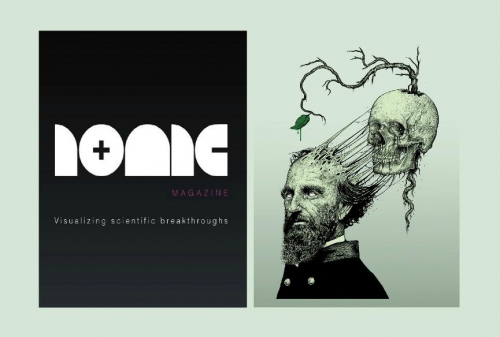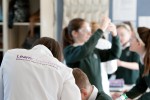It’s been a while since I last blogged, and with good reason! I have busy putting together the RSC’s theme for 2014: Chemistry and Art.
The
National Gallery Faces of Chemistry videos, which were released in January, were the first offering. These three videos each focus on a different chemical technique: microscopy, SEM-EDX and chromatography, each looking at the
Portrait of Alexander Mornauer. The various techniques have been used to examine the history of the painting and discover that the blue background present when the painting was purchased by the National Gallery, London, was in fact added 300 years after the portrait was originally painted! Watch these videos find out how the scientists at the National Gallery discovered this!
Master of the Mornauer Portrait,
Portrait of Alexander Mornauer, about 1464-88, oil on wood, 45.2 x 38.7 cm. The image on the left shows the painting as it looked when it entered the collection in the early 1990s and the image on the right shows how it looks now, after cleaning. © National Gallery, London
The next release for Chemistry and Art is that of
Ionic Magazine whose
latest edition has been developed in collaboration with the Royal Society of Chemistry. I’ll let Ionic Magazine explain its focus:
In each issue, Ionic Magazine will publish recent scientific developments within many areas of science that include medicine, nanotechnology, biotechnology, psychology, astronomy alongside many others. These will be current in the literature, and provide a platform for science writers, whether established in their careers, just beginning or perhaps experimenting their capabilities at science communication, to rant and rave about exciting developments within their particular expertise or interests. Beside each article will lay an artist’s representation of that very story. No graph, no figure, no formulae, instead a piece of art constructed from personal interpretation and not scientific representation. They will leave the reader asking more than can be answered. The ultimate goal: a stunning and stimulating collaboration of two traditionally contrasting worlds.
This edition focuses on the recent developments in RSC journals in the field on scientific and conservation discoveries around various types of art. The stories are deftly told without the technical difficulty of the original paper and the images are intriguing representations of the written content – make of them what you will!

We are also developing new educational content of the chemistry behind art, starting with prehistoric cave paintings all the way through to Impressionism. This will be released in batches throughout the year on Learn Chemistry and eventually all will be presented through our new, coming soon, Chemistry and Art microsite! Cave art coming soon!
Throughout the year departments around the RSC will be tailoring their content to fit with the Chemistry and Art theme. Our Cambridge Science Festival and Big Bang Fair stands will be colour themed, EiC and The Mole will have articles relating to Chemistry and Art (January’s Mole already has the story of the Portrait of Alexander Mornauer) and Chemistry World will have a special issue later this year. Thursday’s monthly public lecture at Burlington House sees Helen Storey and Tony Ryan in conversation discussing their Extreme Collaboration. Sold out, it will be streamed live and available after the event – hopefully on Learn Chemistry too!
